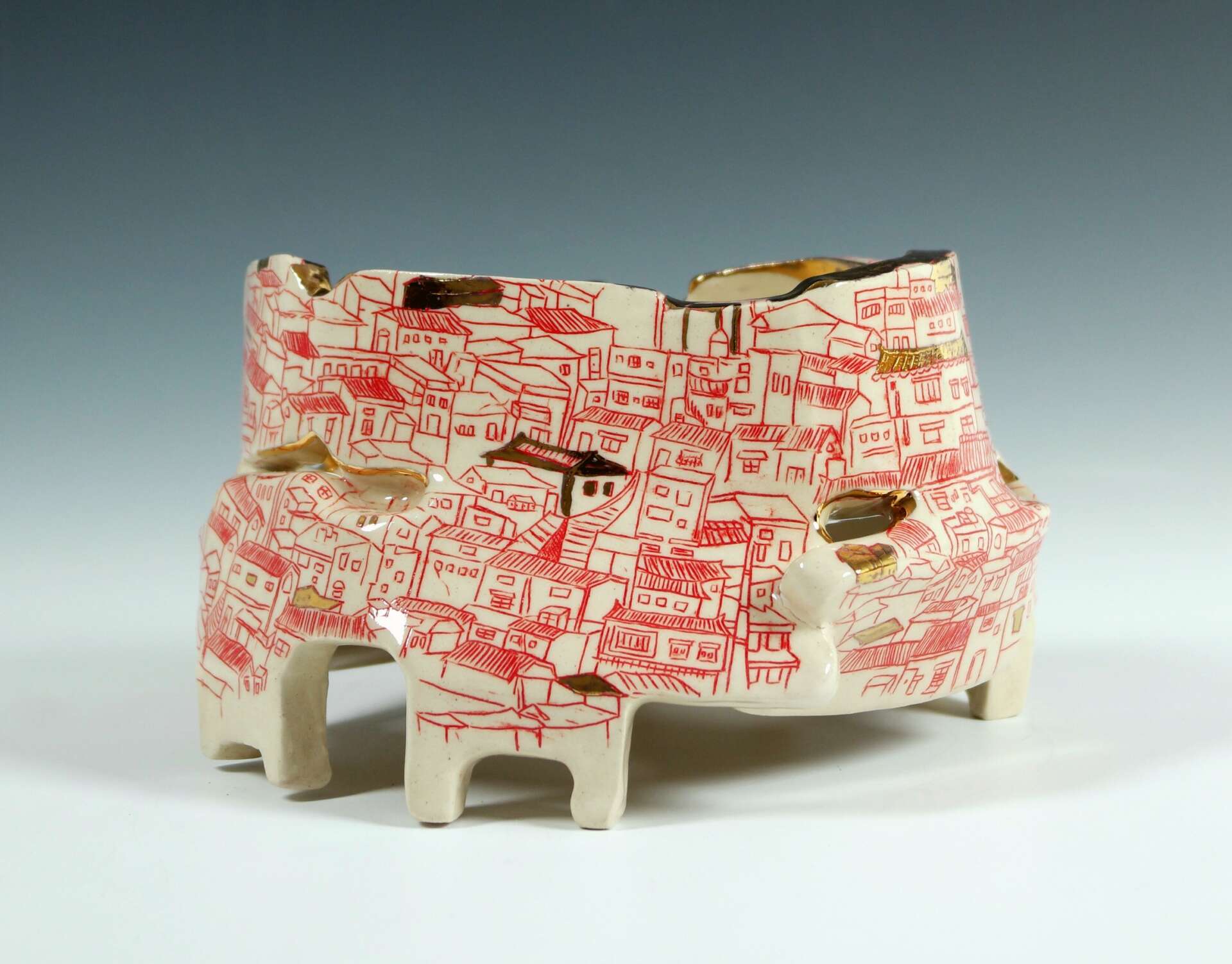We caught up with the brilliant and insightful Jihye Han a few weeks ago and have shared our conversation below.
Jihye, thanks for joining us, excited to have you contributing your stories and insights. When did you first know you wanted to pursue a creative/artistic path professionally?
I took a hand-building ceramics class when I studied nursing during my sophomore year. I still remembered a first project was making a ball, triangle, and cube shape with pinching, coil, and slab technique. This was my first-time touching clay and clay tools. At that time, I felt making the ball shape with pinching and coil was harder than taking an anatomy class. However, I fell in love with clay and can’t wait to go to the ceramic class after finishing another class. Clay made me learn to stay humble and patient. Nikki Blair saw potential in me when I couldn’t see it myself and I decided to keep studying ceramic with her. After graduated Bachelor of Fine Arts from North Carolina, I got a full time job in Texas because I didn’t know how can I become a full time artist at that time. However, I really couldn’t satisfied the work treadmill of my life. I can say one of the brave thing in my life was quitting the full time job and went to a Master of Fine Arts in ceramics program. I think creating is the most valuable thing in your life as a full time artist now.





Great, appreciate you sharing that with us. Before we ask you to share more of your insights, can you take a moment to introduce yourself and how you got to where you are today to our readers?
I lived in Australia and moved to South Korea to go to middle school. And I went to Beijing, China to go to university after graduating high school. I took a trip to New York from China to celebrate graduation of university. I wanted to have more experiences and to see bigger world in USA so I decided to study and live in the State.
My artwork is a metaphor of my experience of moving from place to place, which is coupled with the experience of living in both East and West as a Korean American in the United States. Also I use clay, as well as hand-building techniques, to blend traditional ceramic processes with contemporary ideas to share my experiences, memories, dreams and emotions through visual art. I see my work as a physical manifestation of memory, an exploration of personal history, cultural tradition, and belief systems in the contemporary world.
Are there any books, videos or other content that you feel have meaningfully impacted your thinking?
My family moved around a lot due to changes in my dad’s business. While it was devastating to say goodbye to friends, I was always excited for the opportunity to meet diverse people from all over the world. My dad always bought a series of Disney cartoon books, Korean folktale books, and all kinds of books when I was little. So I read all the books that I could get my hands on since I was young. When I read cartoons or folktale, I am not only looking at the text but also the images and colors between objects and all the other elements in the panel. When all these elements are combined, I can imagine the sense of the passage of time, the space of the whole story, sounds, and action. It is helpful to understand metaphors, symbolisms, and point-of-views deeply.
Drawing lines and shapes was my only way to express my emotions to others and to share my story about Korean cultures with other people when I was little. I realized that a simple line can be a very powerful method to communicate with others and to let them see my voice when I can’t speak their language.





How can we best help foster a strong, supportive environment for artists and creatives?
I believe many kinds opportunists such as artist talk, residency program, award, grant, exhibition, art fair and etc are necessary because it is important to have a space where we could talk about our experiences and culture. So people can understand diversity with different experiences, perspectives, and backgrounds. These great opportunities would being the greatest amount of influence and connection to develop community and to bring to center stage the specific topics such as cross-cultural aspect, discrimination experienced, systemic racism, historical and contemporary narratives of migration and etc. As a BIPOC artist, I think artists need to continue to challenge the systems responsible for inequality. It is essential that artists extend a literal or metaphorical hand to speak our voice and to continue to progress beyond the current situation. I hope that the diverse audience of viewers can relate to my work and develop a conversation about stereotypes and equality within the field of ceramics.
Contact Info:
- Website: www.jihyehanart.com
- Instagram: www.instagram.com/hjhalice
- Facebook: www.facebook.com/jihye.han.9279


